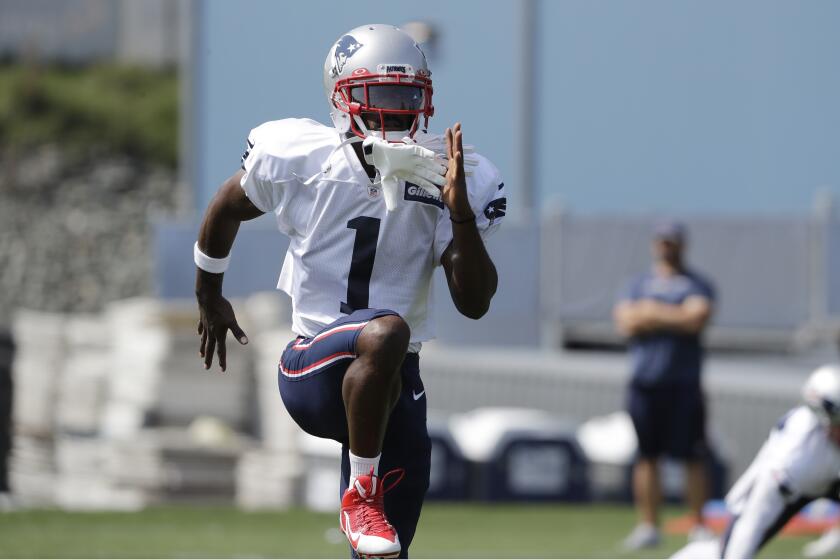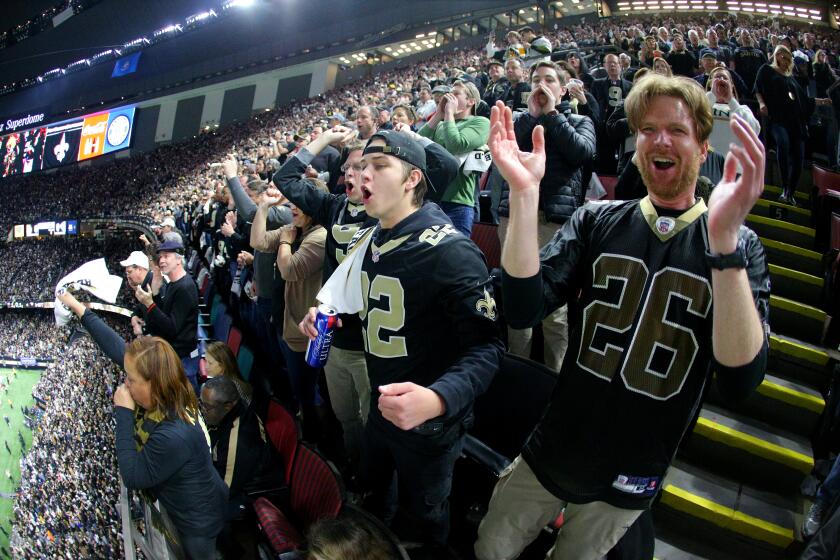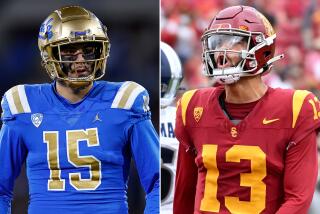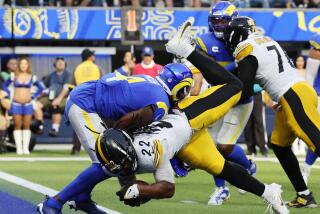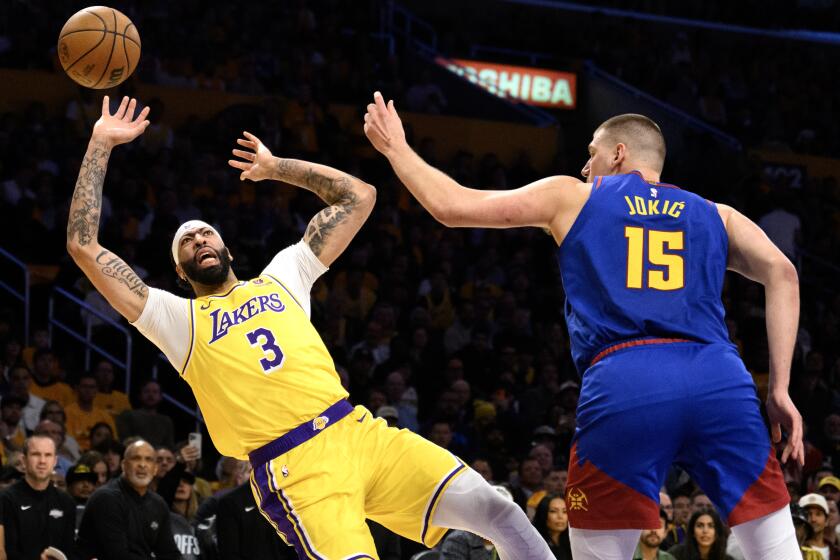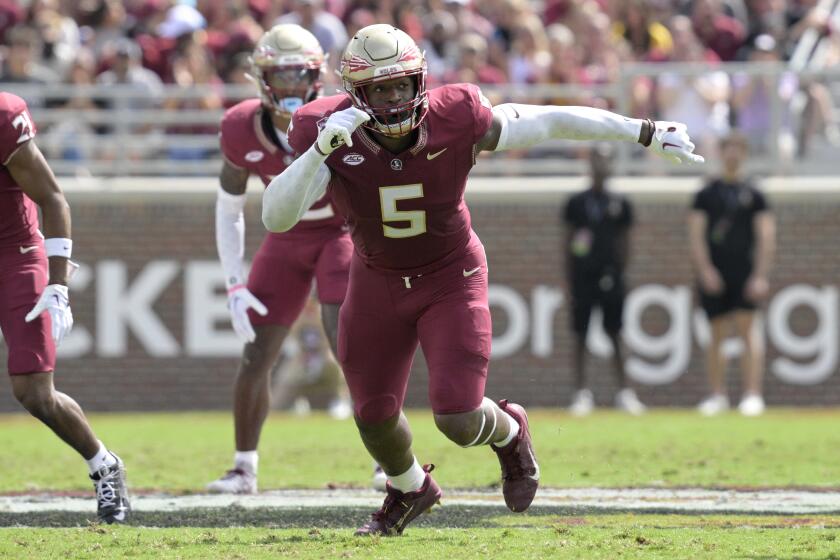Ask Sam Farmer: Why is the Steelers’ logo only on one side of the team’s helmets?

Have a question about the NFL? Ask Times NFL writer Sam Farmer, and he will answer as many as he can online and in the Sunday editions of the newspaper throughout the season. Email questions to: sam.farmer@latimes.com
Why do the Pittsburgh Steelers have their logo on only one side of their helmets?
Ron Drinnenberg
Laguna Hills
Farmer: The Steelers are the NFL’s only team that doesn’t have its logo on both sides.
“It’s a very simple story: It was an arbitrary decision by the equipment manager,” said Joe Gordon, the team’s former communications director. “Dan Rooney [whose father, Art, founded the franchise] told him to put the decal on the helmet, and he just went ahead and did it and put it on the right side only. Dan was not specific as to whether he wanted it on both sides of the helmet or just the one side. So once it was done, he never changed it.”
As for adding a second logo, Gordon said: “I was there 29 years, and that was never discussed.”
So what does that logo mean, anyway?
It was originally the logo for the American Iron and Steel Institute, and features a circle around three four-pointed geometric shapes called hypocycloids in yellow, red and blue. Those colors represent the three materials used to make steel: yellow for coal, red for iron ore and blue for steel scrap. The Steelers petitioned the AISI to use the logo and, inside the circle, change the word “Steel” to “Steelers.” Also, AISI uses an orange hypocycloid instead of red.
Some see Antonio Brown’s legal troubles in a “boys will be boys” mentality that still takes precedence whenever such a revelation comes to light.
In the early 1960s, Steelers helmets were yellow, and the logo was harder to see. But those logos popped when the team switched to black helmets.
::
What is the process used to evaluate which college officials are considered good enough to be considered for assignment in the NFL?
Dale Widolff
Pasadena
Farmer: For this, I turned to former NFL referee Mike Carey, who explained the system:
“Virtually everybody starts out at the Pop Warner level, and they train you there how to officiate the game. If you’re good enough there, they let you do junior varsity high school ball. The rule book is incredible. Every football player who comes into officiating, the first thing they say is, ‘I want to do this because I know I know the rules.’ But people have no clue of what the rules are until you look at the book. It’s really kind of laughable. You have to really study.
“JV is a slight graduation from Pop Warner. But the step up to high school varsity, that’s a quantum leap. You’re stepping up to 17- and 18-year-olds. They’re fast, they’re young men, and the coaching is very good. Real football is being played there.
After months of consternation, dismissed lawsuits and anger, New Orleans Saints fans still have faith in their team’s championship aspirations.
“Then when you move on to college football, the rule book changes. You’ve got to study a new rule book just to do [junior colleges]. Then, once you get to that level, that’s when the Division I schools scout you just like they scout high school players. They have a staff that ... scouts officials. You put in an application, they come and scout you, and if they think you’re good enough, they let you move to Division I.
“When you get to Division I, you don’t start out with a nine-game schedule. Because in the high school game, you might be playing in front of 10,000 people at the most. The college game, you’re playing against 50,000 or 60,000 people, so that’s a dramatic concentration distraction. Some people can do it, and some people can’t. So they give you a few games to see if you can survive that. The scrutiny is a lot higher. So you work three games, five games, then a full schedule.
“You need to have five years in Division I before the NFL will bring you in.”
So basically, you’re a salmon swimming upstream.
More to Read
Get our high school sports newsletter
Prep Rally is devoted to the SoCal high school sports experience, bringing you scores, stories and a behind-the-scenes look at what makes prep sports so popular.
You may occasionally receive promotional content from the Los Angeles Times.

